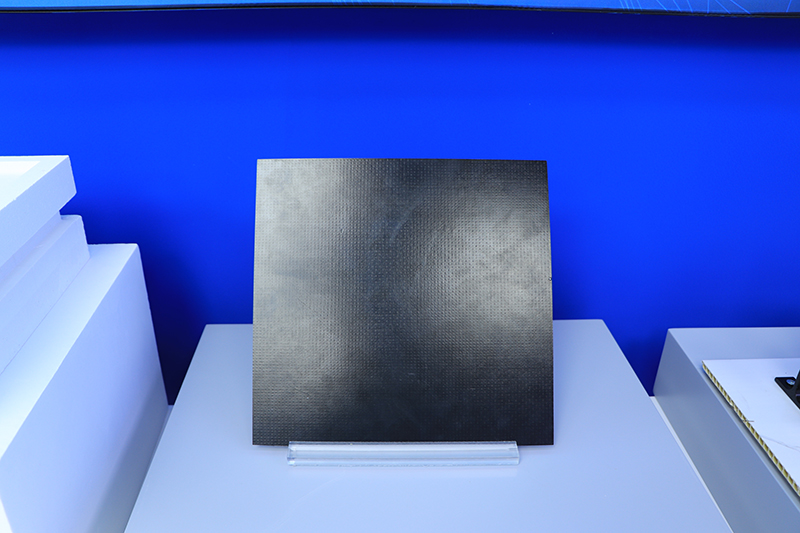[Aluminium oxide fiber manufacturer] Global Composite Material Supply and Demand Market Analysis
![[Aluminium oxide fiber manufacturer] Global Composite Material Supply and Demand Market Analysis](/uploads/image/20241108/3-20241108-4755.webp)
Composite materials refer to materials with new properties composed of two or more materials with different properties through physical or chemical methods at the macro (micro) level. Various materials complement each other in terms of performance, creating a synergistic effect, making the overall performance of composite materials better than the original component materials and meeting various different requirements. The upstream of the composite products industry is mainly glass fiber, resin and other industries, while the downstream is mainly wind power, automobile, engineering machinery, yacht and other industries. At present, the global composite materials market value and output have increased steadily in recent years.
Composite materials industry production capacity continues to improve
Stimulated by the demand for composite materials in the Asia-Pacific region, the world has accelerated composite material production capacity planning, and the production capacity of composite materials has continued to improve, thus promoting the continuous growth of industry output. In 2017, the global composite materials output value was approximately US$86.7 billion, a year-on-year increase of 5.73%.
In terms of regions, in 2017, the composite materials output value in North America accounted for 30% of the global output value; mainland China accounted for 25%; Europe accounted for 20%. Composite material products in North America are mainly used in aerospace, transportation and other fields, with high added value and large market size. Relatively speaking, although the output of composite materials in mainland China is high, the output value is low and the application fields are low-end. In the future Development requires industrial structural adjustment.

Global demand for composite materials
In recent years, under the influence of the global economic downturn and other major environmental factors, the global composite materials market structure is gradually changing. The composite materials market in developed countries and regions such as the United States, Japan, and Europe is relatively saturated and has a relatively slow growth rate. Due to the long-term per capita consumption level of composite materials in the Asia-Pacific region, the market demand space is large and the growth rate is rapid. This has overall promoted the stable growth of the composite materials industry. Data show that the global composite materials market reached approximately US$30.4 billion in 2017, and the market size of composite materials end products reached approximately US$86.4 billion, of which the market size of high-performance composite materials end products was approximately US$25 billion.
Global composites demand structure
From a global perspective, the current global composite materials are mainly glass fiber composite materials and carbon fiber composite materials, which together account for more than 90% of the entire composite materials market. Therefore, the following mainly focuses on the downstream demand structure of glass fiber composite materials and carbon fiber composite materials.
1. Glass fiber composite material demand structure
Glass fiber has excellent properties such as light weight, high strength, high and low temperature resistance, corrosion resistance, heat insulation, flame retardant, sound absorption, electrical insulation and a certain degree of designability. Therefore, it is widely used in transportation, construction, electronic appliances, pipelines, chemical industry, etc. It has achieved large-scale application in fields such as environmental protection, national defense and military industry.
In the global glass fiber consumer market, the main application areas of glass fiber are concentrated in construction, transportation, industrial applications, electronics and electrical, new energy and other fields, accounting for 32%, 28%, 21%, 11% and 8% respectively.
2. Carbon fiber composite material demand structure
At present, the aerospace field is one of the main application areas of carbon fiber, which is mainly due to the light weight and high strength of carbon fiber. Compared with steel or aluminum, carbon fiber can reduce weight by 20% to 40%. In the aerospace field, it is mainly used in the structural materials of aircraft (accounting for about 30% of the weight of the aircraft). Therefore, overall, the use of carbon fiber can make aircraft The weight is reduced by 6% to 12%, thereby significantly reducing the fuel cost of the aircraft. In the aerospace field, carbon fiber was first used in the manufacture of satellite antennas and satellite brackets. At the same time, due to its heat-resistant and fatigue-resistant properties, carbon fiber has also been widely used in solid rocket motor casings and nozzles.
In addition to the aerospace field, carbon fiber composite materials are also widely used in sporting goods, wind power industry, automobile manufacturing, ships, electronics and electrical and other fields. From the perspective of demand proportion, the current demand scale in aerospace, sporting goods, wind power industry, and automobile manufacturing accounts for 48%, 13%, 12%, and 8% respectively. The proportions of other application fields are all 5% and below.
To sum up, at present, the supply and demand of the global composite materials industry are basically balanced. From a regional perspective, the composite materials industry in North America has the highest output value and a high-end industrial structure, while mainland China has a higher output value but a lower-end industrial structure. From the perspective of application fields, glass fiber composite materials are widely used in construction, transportation, and industrial applications, while carbon fiber composite materials are widely used in aerospace, sports and leisure, and wind turbine blades.

